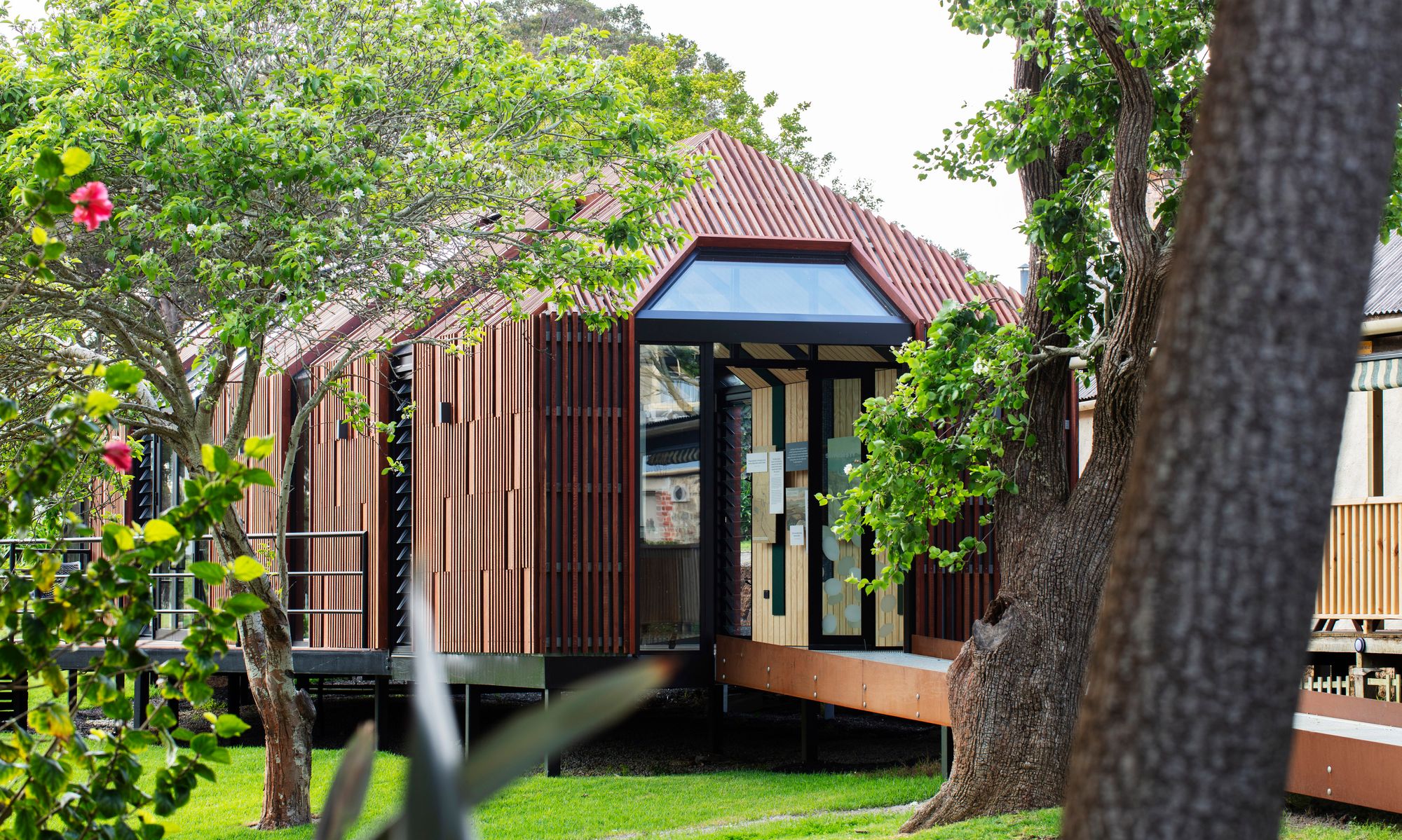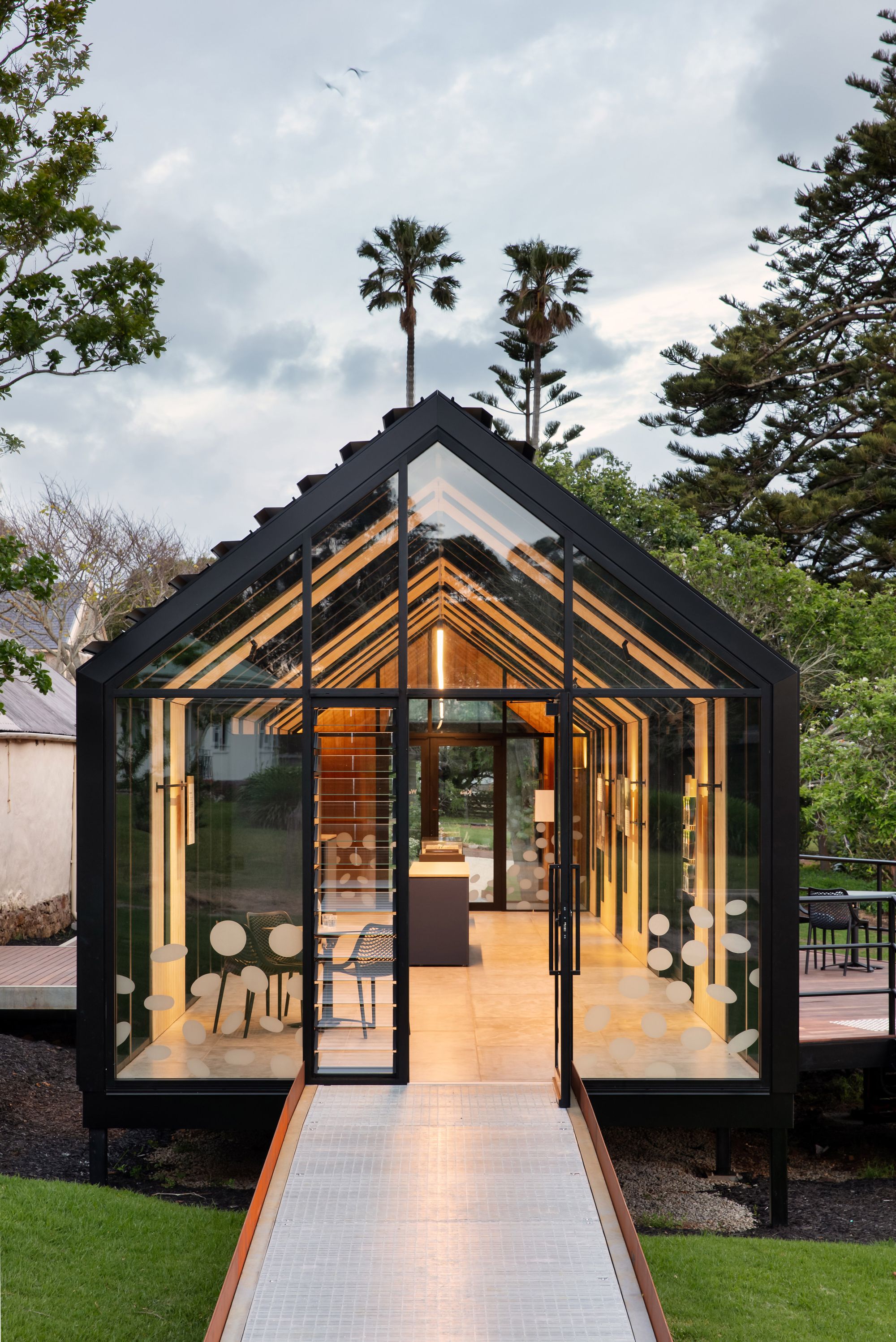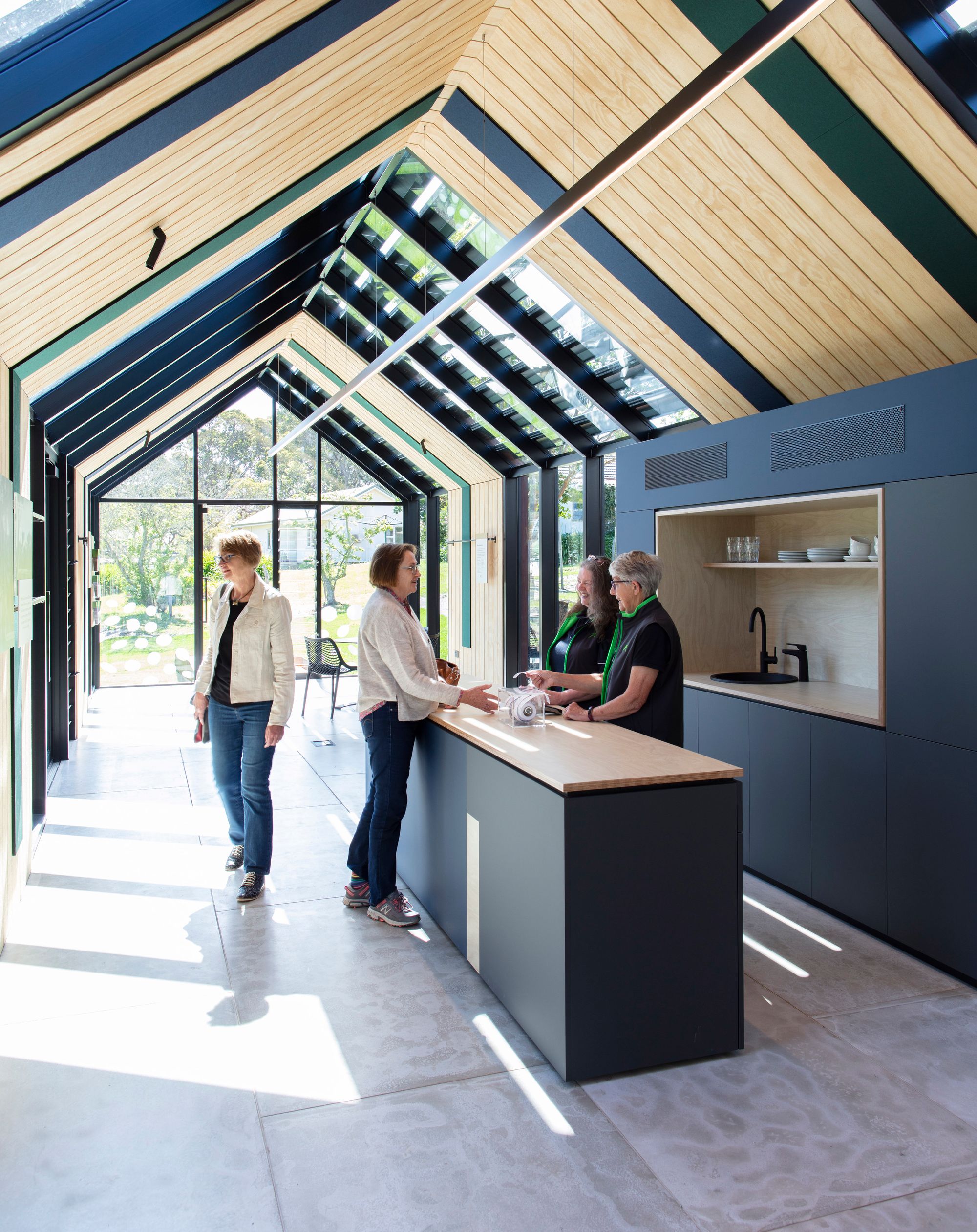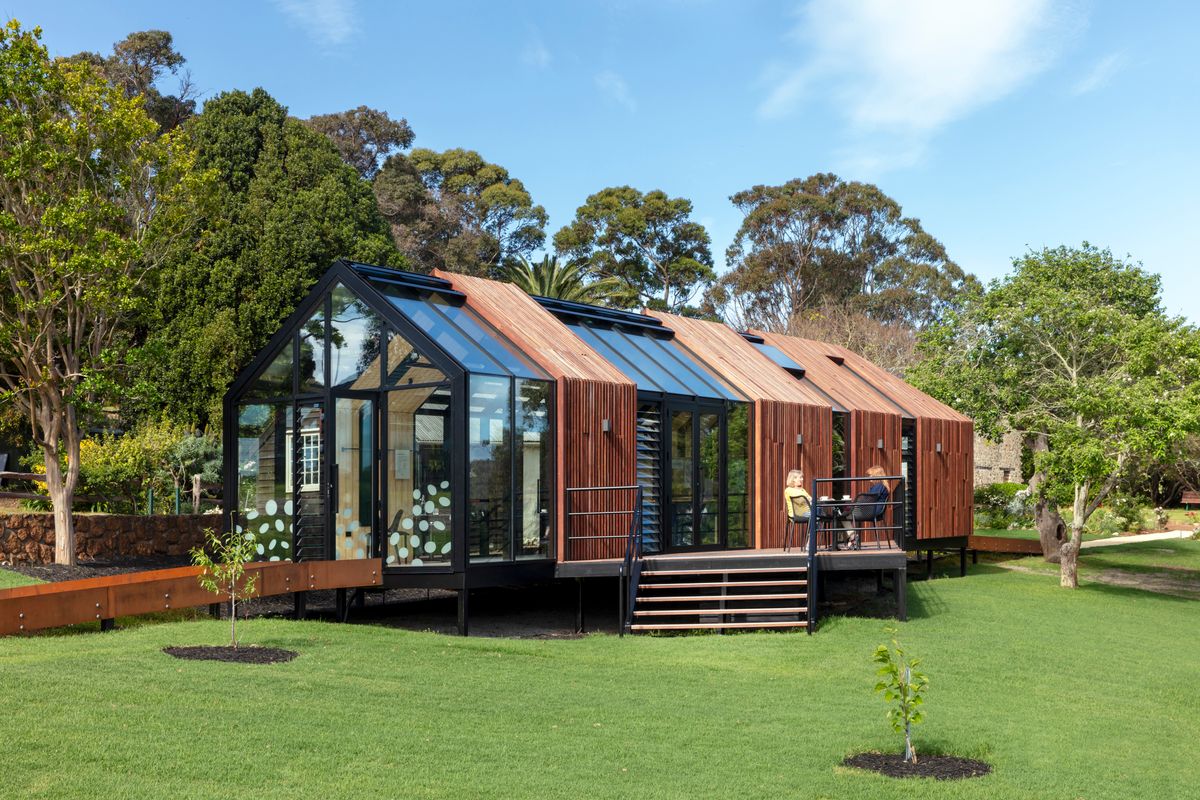Words by Sandy Anghie. Photography by Bo Wong. This story was originally published in The Architect magazine, an official publication of the Australian Institute of Architects.
With our borders closed for the past two years, many of us have taken the opportunity to explore Western Australia – learning about our own state and its history and finding many hidden gems along the way. The Visitor Orientation Hub at Strawberry Hill Barmup by PTX Architects is one of those gems.
The Visitor Orientation Hub provides a new entry point for this locally significant and nationally important place. Historically, the site was home to an Aboriginal campground on an important travelling route. Then, in 1826, it became the first european farm site in Western Australia. The site is now a registered Aboriginal site and is on the State Heritage Register under the care of the National Trust, the client for this project.

David Gibson and Melanie Hoessle from PTX Architects worked closely with the National Trust and local Menang Elders on the project. “Our first step in the design process was to meet with the Elders,” says David. “Initial discussions uncovered many interesting stories.” In particular, David explains how Albany was known as the friendly frontier, where Aboriginal leader Mokare built a friendship with the first government resident of Albany Alexander Collie which mitigated conflict. “Albany is very proud of this history,” says David.
The original workers’ quarters on the site dates back to 1833. The brief required an addition which would be universally accessible and provide greater amenity for volunteers, and flexibility to welcome more visitors to the site. The architects’ response was a new building which sits to the south of the original workers’ quarters. “It’s a new component”, says David. “We didn’t want to intrude on the heritage fabric.”
The new building, which mirrors the original in scale and form, was inspired by both Mia shelters and a Wardian Case. “The idea was the harmonious bridging of two cultures,” says David. “The building is clad in timber battens that reference local Indigenous Mia shelters, while the glasshouse elements allude to an 19th century Wardian Case, used to transport European plants to the colony by ship.”

The theme of bridging cultures continues inside the building. “The two sides of the building tell different stories,” says Melanie. “One side of the building the Indigenous stories and the other European.” In this way, the architecture becomes a part of the storytelling process.

The project contributes to the long-term sustainability of this significant place – enhancing the visitor experience for tourists and locals alike. National Trust CEO Julian Donaldson said, “PTX Architects responded brilliantly to the brief. We are delighted with the really positive contribution the hub is making to how visitors understand the layered story at Strawberry Hill/Barmup.”
Stop by, enjoy the architecture and learn about our state’s history next time you are travelling in our Great Southern region.



